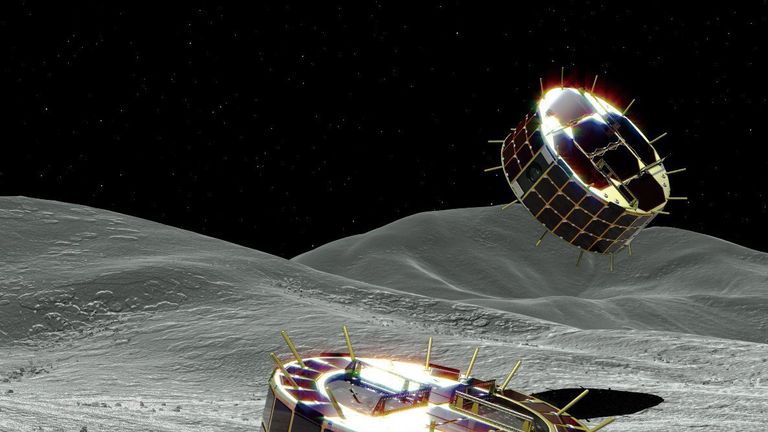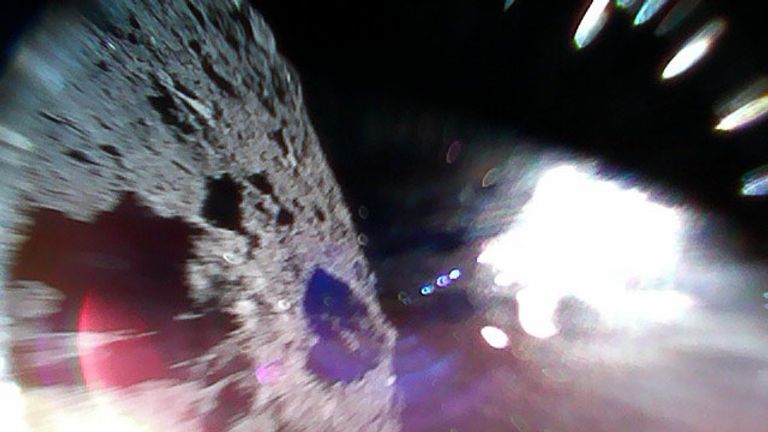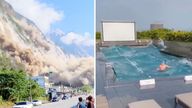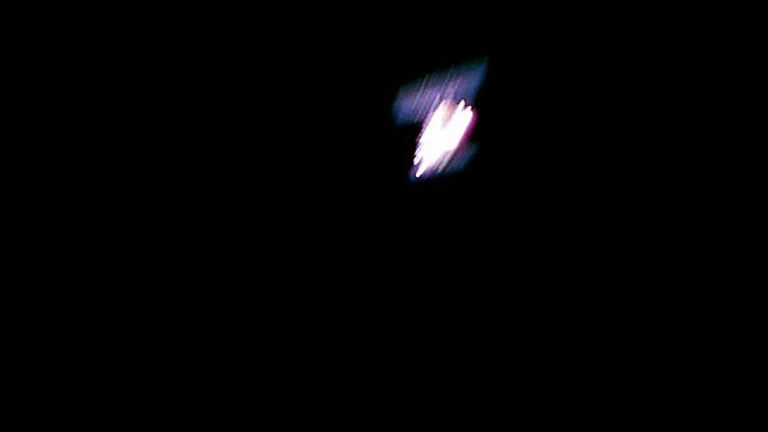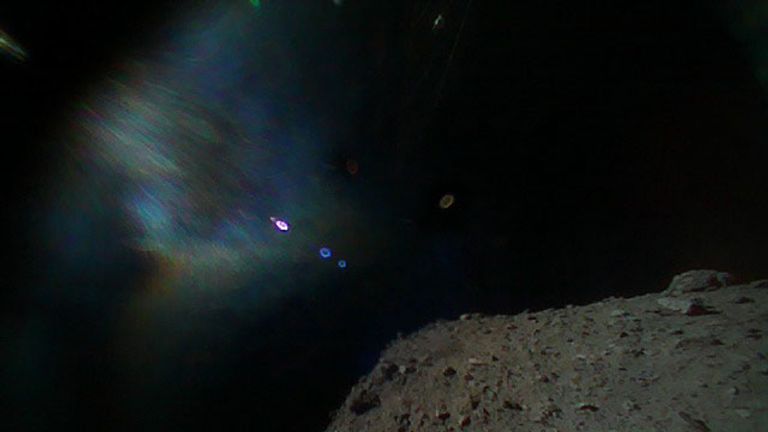Japan's hopping space rovers land on asteroid
The Japanese space agency has successfully landed two rovers on a large asteroid, and they have sent back images to Earth.
Monday 24 September 2018 07:23, UK
Two mini space rovers have landed on an asteroid and sent images back to Earth.
Japan's space agency, JAXA, launched the rovers on the Hayabusa2, and they released from the craft on 21 September.
The team behind the expedition faced a nervous two-day wait for the Minerva-II rovers to send back information, but on Sunday, they confirmed the rovers landed.
A statement from JAXA read: "The two rovers are in good condition and are transmitting images and data. Analysis of this information confirmed that at least one of the rovers is moving on the asteroid surface."
The rovers hop across the surface, because the gravity on the Ryugu asteroid makes it impossible for them to roll.
Yuichi Tsuda, Hayabusa2 project manager said: "I cannot find words to express how happy I am that we were able to realise mobile exploration on the surface of an asteroid.
"I am proud that Hayabusa2 was able to contribute to the creation of this technology for a new method of space exploration by surface movement on small bodies."
This is the first exploration of an asteroid by a rover.
The two robots will capture colour images of the asteroid and measure temperatures before the agency sends a larger rover in October.
Next month Hayabusa2 will deploy an impactor which will explode above the asteroid, to blast a crater into its surface.
The probe will then collect fresh materials from inside the crater which have not been exposed to wind and radiation.
Hayabusa2 launched in December 2014 and is due back to Earth in 2020.
JAXA tried to launch a probe in 2005, but it failed to land on its target asteroid.
